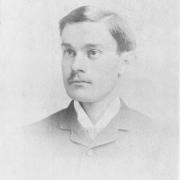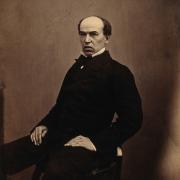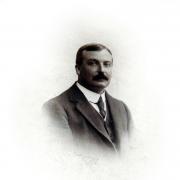Kent is one of the most haunted counties in the country and it's during the winter months that lots of our ghosts and ghouls come out to play
Winter’s tales from round Kent
Headless horsemen, spectral sailors, malevolent monks; we’ve got the lot. So sit back, prepare a stiff drink and let me take you on a journey into the eerie world of Kent’s winter ghosts.
But before I begin, a word of warning first: so terrible and terrifying are these tales that those of a nervous disposition should read no further.
Spine-chilling Sailor
One stormy winter’s night during the 19th century a vessel ran aground on the Kentish coast. The captain of the ship was washed up on the shore and managed to stagger to the Shipwright’s Arms in Faversham. Cold, wet and desperate he began to beat repeatedly on the door. Sadly the landlord, thinking some of his rowdier customers had returned for another drink, refused to leave his bed. The next morning the door was opened to reveal the captain’s frozen body. On cold, winter evenings, the phantom sailor has been spotted in the bar, usually accompanied by the smell of tobacco and rum.
Headless Haunting
Rainham has its fair share of ghosts but one of its most unnerving apparitions is said to occur during December when the headless ghost of Christopher Bloor appears in the town. According to legend, Bloor was set upon and decapitated by a gang of irate husbands fed up with his philandering. His head was later found on a pole at St Margaret’s Church (I suppose you’ve got to keep a severed head somewhere?). Every Christmas Eve Bloor appears, carrying his head under his arm, riding in a carriage drawn by headless horses, driven by a headless coachman, and attended by a headless footman. He and his ghoulish entourage make a journey from the church to his old home at Bloor’s Place, where they then disappear into the night.
Macabre Monk
On these dark winter nights, the county’s historic pubs can offer the most welcoming of evenings. All the ingredients for a great night out are there; roaring fires, good company and a convivial atmosphere. But how many of us would want to share this with the chilling sight of a ghostly monk? Bricked up alive for a sin against his order, during November this misty monk is said to emerge from behind the bar at the Coopers Arms in Rochester. But beware; don’t confuse him for one of the staff because conversing with ghouls can be dangerous and also you’ll never get your drinks.
Spectral Ship
The Goodwin Sands, a devilishly treacherous sandbank off the coast at Deal, has been the site of hundreds of shipwrecks in the past. Local legends have it that there are several ghost ships that haunt the area, but it’s the ghost of the SS Violet that concerns us here. In 1857 the vessel became the first steamer to be shipwrecked on the sands. In the winter of 1939, a similar vessel was spotted, appearing to be in trouble. Although lifeboats were sent out to her aid, the rescuers were unable to find any trace of the ship. During the winter months the ship, re-enacting its tragic sinking, has occasionally been seen by others. Be warned though; sighting any ghost-ship can be dangerous as, according to legend, they are a portent of doom.
Horrifying Hitchhiker
The phantom hitch-hiker story is told all over the world and it has its roots in folklore. The famed ghost of Blue Bell Hill on the A229 is thought to be one of these. She has been sighted many times but her period of greatest activity occurred during the autumn of 1992 when three separate motorists reported knocking down a figure that ran into the path of their cars late at night. Two of the drivers involved stated that the figure of a young woman had stared directly into their eyes as the car struck her. Although the incidents were investigated by the police there was no evidence that any accidents had occurred.
Creepy Clock
In Charles Dickens’ The Uncommercial Traveller, reference is made to a ‘moon-faced clock’, which is believed to be that which hangs outside the Corn Exchange in Rochester. It is before this clock on Christmas Eve that Dickens himself is believed to appear. According to local legend, at the final stroke of midnight Dickens carefully takes a gold fob-watch out from his pocket, checks the time and then vanishes into the night air.
Ghoulish Guard
Courtesy of Jon Sales from Southern Paranormal Investigations
Royal Victoria Place in Tunbridge Wells might seem like a safe place in the daytime when it is filled with happy shoppers, but at night it’s a very different story. There are several ghosts that haunt the building, such as that of a little girl who’s been seen on a number of occasions cheekily poking her head around corners here and there. But the most infamous ghost is that of an old security guard who’s often been seen by those working there late at night. Before Royal Victoria Place was built, there used to be warehouses in that part of Tunbridge Wells and according to local legend, during a winter bombing raid on the town early on in the Second World War several were destroyed. Luckily, most of those who worked there had been away from the building at the time, but sadly one security guard remained and he died during the raid. It is his ghost who is now spotted wandering the shopping mall late at night.
The Ghost of 36 St Margaret’s Street, Canterbury
Courtesy of John Hippisley of Canterbury Ghost Tours
Last November, after a night out down the local pub, the students that lived here thought it would be a good idea to try out a Ouija board. “Is there anybody there?” they asked. The glass jerked towards the YES. They felt sure that this was a good sign, and proceeded to ask for a name. The reply was Abigail – no one in the room was called Abigail and none of the students knew anyone of that name, so on they pressed.
“When were you born?”
“1846”
“When did you die?”
“1873”
“How did you die?”
“Joshua knows how!”
Joshua, an oncology student who lived with them in the house, was away in London. It did not make any sense? Did she die of cancer, they asked again and the reply was just as strange: “David knows the place!”
David, one of the four, was getting nervous for he had during the first weeks in the house felt the presence of something on the stairs. But he had never told anyone else about the feeling for fear of being accused of being weird. The others looked towards him for an explanation, but he could not give one. Then the glass leapt forward again and spelled out the name of a person who had visited them just that morning. “Peter Wilkes was here this morning and last Monday” it read – this meant that whatever this thing was it had been watching them for some time.
In fear, David picked up the board and threw it out of the window. The others, feeling that what they had already experienced was reason enough to feel unhappy, left the room and headed for their own bedrooms. Each locked their door to prevent entry by an unseen force.
David claimed that he slept relatively soundly for an hour or two but was woken by the feeling of something sitting on his bed. He opened his eyes to find that the mirror usually located at the top of the stair well was now floating above his head. He reached around the mirror to see if it was being held up by a wire, but as he looked he saw the face of a gnarled woman staring blindly back at him. The face made him scream in terror.
The noise not only woke his colleagues but caused the mirror to shatter covering him in shards of broken glass. His fellow students tried in vain to open the locked door for over a minute before using a fire extinguisher to break the door down. By this time poor David had lost over a pint of blood. Being medically trained they knew exactly what to do – they called an ambulance and tried to stem the bleeding. David survived and was taken to Kent & Canterbury Hospital then transferred to East Grinstead Hospital for skin grafts to his face and chest.
It was later discovered that in 1873 a young woman, named Abigail Peterson committed suicide on these premises. It is thought that she did this because her life had become intolerable due to her husband’s violent behaviour.


























